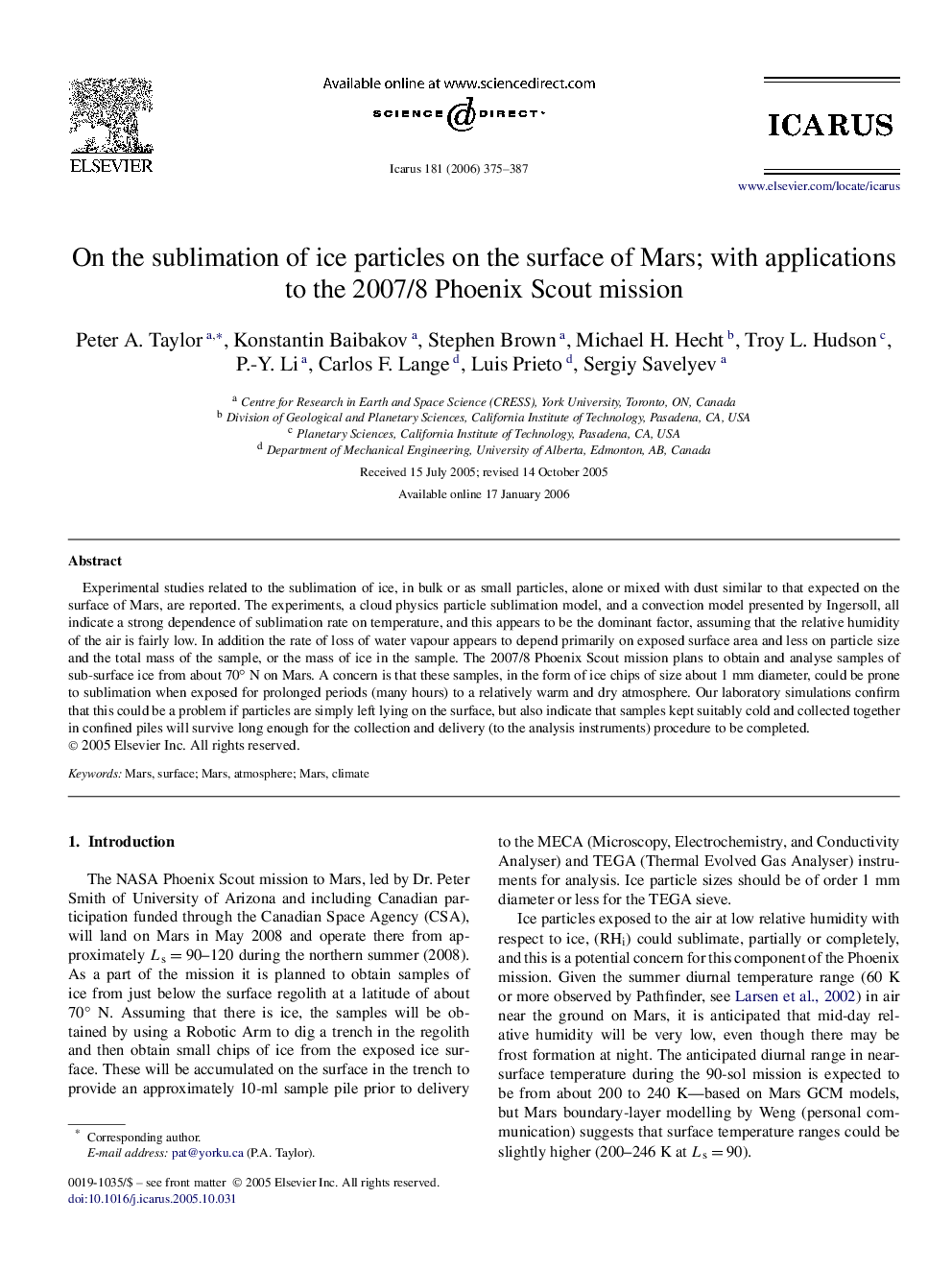| Article ID | Journal | Published Year | Pages | File Type |
|---|---|---|---|---|
| 1775819 | Icarus | 2006 | 13 Pages |
Experimental studies related to the sublimation of ice, in bulk or as small particles, alone or mixed with dust similar to that expected on the surface of Mars, are reported. The experiments, a cloud physics particle sublimation model, and a convection model presented by Ingersoll, all indicate a strong dependence of sublimation rate on temperature, and this appears to be the dominant factor, assuming that the relative humidity of the air is fairly low. In addition the rate of loss of water vapour appears to depend primarily on exposed surface area and less on particle size and the total mass of the sample, or the mass of ice in the sample. The 2007/8 Phoenix Scout mission plans to obtain and analyse samples of sub-surface ice from about 70° N on Mars. A concern is that these samples, in the form of ice chips of size about 1 mm diameter, could be prone to sublimation when exposed for prolonged periods (many hours) to a relatively warm and dry atmosphere. Our laboratory simulations confirm that this could be a problem if particles are simply left lying on the surface, but also indicate that samples kept suitably cold and collected together in confined piles will survive long enough for the collection and delivery (to the analysis instruments) procedure to be completed.
